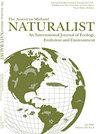Exclusion of Overabundant White-tailed Deer (Odocoileus virginianus) Results in Shifts in Soil Microbial Communities and Abiotic Soil Condition in a Northeastern Deciduous Forest
IF 0.6
4区 环境科学与生态学
Q4 Agricultural and Biological Sciences
引用次数: 0
Abstract
Abstract. Past and current anthropogenic practices have resulted in dramatic alterations to ungulate population densities worldwide. When ungulate populations are overabundant, they can alter the dynamics, structure, and function of ecosystems. White-tailed deer (Odocoileus virginianus), specifically, can occur at densities far greater than their historical records in parts of their native range, which includes forests in the northeastern U.S. They have been shown to alter community structure of native plants, indirectly impact animal communities, and promote the success of invasive species. Despite much research into the effects of overabundant ungulates and deer in particular, less is known about the effects of deer on soil microbial communities. Here, we utilized soil samples from inside and outside of six deer exclosures located in a regional second growth mixed hardwood forest on the Binghamton University campus in Vestal NY, U.S.A. A metagenomic analysis was conducted on DNA extracted from the soil to identify the microbes present. Soil characteristics, including soil organic matter, soil moisture, pH, and electrical conductivity were also measured. Soil samples from inside exclosures had on average lower pH, higher soil moisture and organic matter, and higher electrical conductivity. The microbial communities across all samples were dominated by Proteobacteria, Acidobacteria, and Actinobacteria. However, the structure of the microbial soil community appeared to differ between samples taken inside and outside the exclosures, with those taken outside more closely resembling other outside samples and those sampled inside soils showing more variability in community structure. Overall, our results suggest that overabundant deer may have a homogenization effect on the soil abiotic environment and the soil microbial community.东北落叶林中过量白尾鹿的排除导致土壤微生物群落和非生物土壤条件的变化
摘要过去和现在的人为活动导致了全球有蹄类动物种群密度的急剧变化。当有蹄类种群数量过多时,它们可以改变生态系统的动态、结构和功能。特别是白尾鹿(Odocolieus virginianus),在其原生范围的部分地区,包括美国东北部的森林,其密度可能远高于其历史记录。它们已被证明可以改变原生植物的群落结构,间接影响动物群落,并促进入侵物种的成功。尽管对过多的有蹄类动物,尤其是鹿的影响进行了大量研究,但对鹿对土壤微生物群落的影响知之甚少。在这里,我们利用了位于美国纽约维斯塔宾厄姆顿大学校园的区域二次生长混合阔叶林中的六个鹿围场内外的土壤样本。对从土壤中提取的DNA进行了宏基因组分析,以确定存在的微生物。还测量了土壤特征,包括土壤有机质、土壤水分、pH值和电导率。围栏内的土壤样品平均pH值较低,土壤水分和有机质较高,电导率较高。所有样本中的微生物群落以变形杆菌、不动杆菌和放线菌为主。然而,在围栏内外采集的样本之间,微生物土壤群落的结构似乎有所不同,在围栏外采集的样本与其他外部样本更为相似,而在土壤内部采集的样本在群落结构上表现出更大的可变性。总体而言,我们的研究结果表明,过多的鹿可能对土壤非生物环境和土壤微生物群落产生均质化影响。
本文章由计算机程序翻译,如有差异,请以英文原文为准。
求助全文
约1分钟内获得全文
求助全文
来源期刊

American Midland Naturalist
环境科学-生态学
CiteScore
1.20
自引率
0.00%
发文量
38
审稿时长
18-36 weeks
期刊介绍:
The American Midland Naturalist has been published for 90 years by the University of Notre Dame. The connotations of Midland and Naturalist have broadened and its geographic coverage now includes North America with occasional articles from other continents. The old image of naturalist has changed and the journal publishes what Charles Elton aptly termed "scientific natural history" including field and experimental biology. Its significance and breadth of coverage are evident in that the American Midland Naturalist is among the most frequently cited journals in publications on ecology, mammalogy, herpetology, ornithology, ichthyology, parasitology, aquatic and invertebrate biology and other biological disciplines.
 求助内容:
求助内容: 应助结果提醒方式:
应助结果提醒方式:


